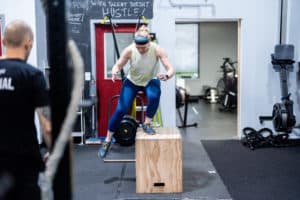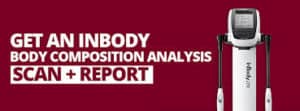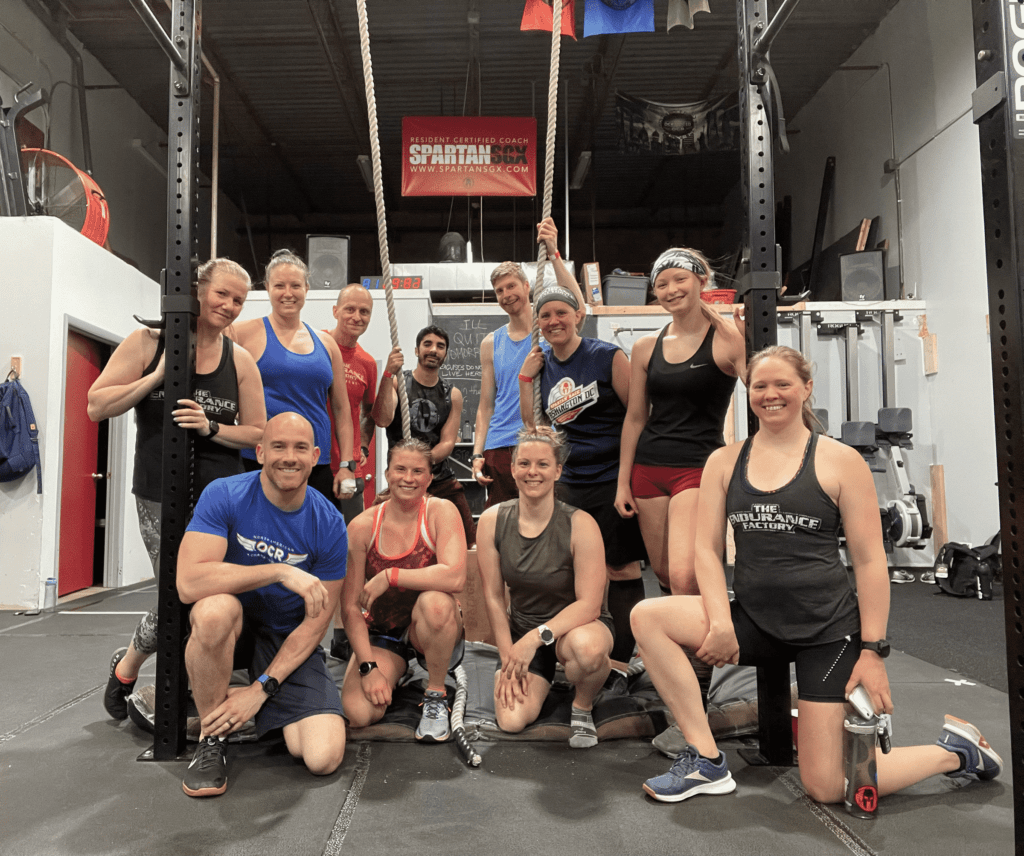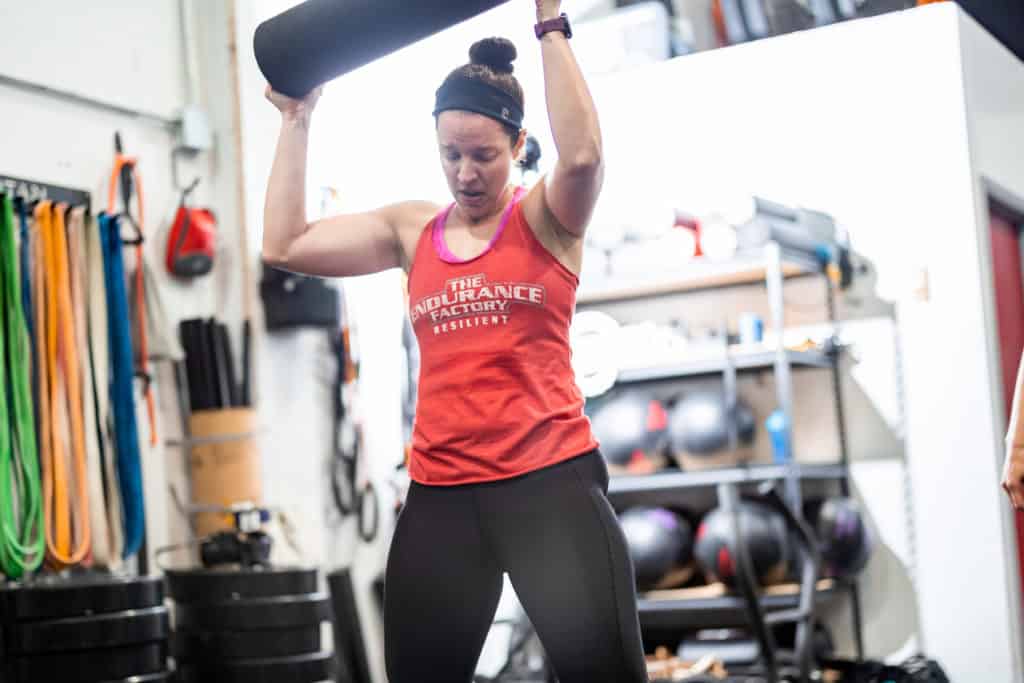Embarking on a CrossFit journey can be both exciting and daunting for beginners. With the intense workouts, competitive atmosphere, and focus on achieving personal records (PRs), it’s easy to get caught up in the hype. However, the true essence of CrossFit lies in mastering the basics before chasing after those impressive numbers. In this guide, we will break down why prioritizing technique over PRs is vital for beginners looking to excel in their CrossFit journey.
Table of Contents
ToggleKey Takeaways:
- Technique over Speed: Focus on mastering proper technique before trying to beat personal records or go for faster times.
- Embrace Challenges: Don’t shy away from difficult movements or exercises; embrace them as opportunities for growth and improvement.
- Long-Term Benefits: CrossFit is a program that provides long-term results and benefits, so prioritize learning and mastering the basics for sustained progress and success.
Understanding CrossFit Terminology
Even for seasoned athletes, CrossFit jargon can sometimes feel like a foreign language. But fear not, as we break down the common terms and phrases used in the CrossFit world to help beginners navigate this exciting fitness journey.
Decoding Common CrossFit Lingo
CrossFit box, WOD, AMRAP, EMOM – these are just a few examples of the unique terminology you’ll encounter in a CrossFit gym. Understanding these terms is crucial for participating in classes and conversations within the CrossFit community. Let’s examine the meanings behind these words and how they apply to your training.
The Meaning of “PR” and Its Role for Beginners
CrossFit Personal Record (PR) signifies the best performance you’ve achieved in a particular movement or workout. While chasing PRs can be motivating, beginners should prioritize mastering proper form and technique before aiming for new personal bests. It’s crucial to establish a solid foundation to prevent injuries and improve overall performance in the long run.
It’s important to note that focusing on technique and building strength gradually will lead to more sustainable progress in your CrossFit journey. According to a study by the American College of Sports Medicine, beginners who prioritize form over weightlifting volume are less likely to experience injuries and are more likely to see improvements in their fitness levels over time.
How to Approach CrossFit as a Beginner
Some people commence on their CrossFit journey with dreams of smashing personal records from day one. While ambition is admirable, it’s crucial for beginners to prioritize mastering the foundational movements and techniques before focusing on lifting heavy weights or achieving fast times. Setting realistic expectations is key to building a strong foundation and preventing injuries.
Setting Realistic Expectations
With CrossFit, progress is not linear, and improvements take time. It’s vital for beginners to approach each workout with a mindset of learning and growth, rather than solely striving for immediate results. Start by focusing on mastering basic movements such as squats, deadlifts, and push-ups before progressing to more complex exercises. By setting realistic and achievable goals, beginners can build a solid foundation for long-term success in their CrossFit journey.
Importance of Consistency Over Intensity
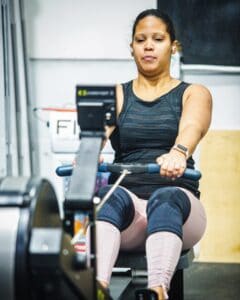
To ensure steady progress in your CrossFit journey, focus on showing up consistently to your workouts, even on days when you may not feel your best. By prioritizing regular attendance and steady progress over occasional bursts of intensity, beginners can build a strong foundation for success in the long run.
Mastering the Basics: Technique First
For beginners in CrossFit, it can be tempting to focus on setting personal records (PRs) and pushing yourself to lift heavier weights or complete workouts faster. However, the key to long-term success in CrossFit lies in mastering the basics and prioritizing proper technique over intensity. Building a strong foundation of movement patterns and posture will not only prevent injuries but also improve performance and results in the long run.
The Fundamentals of Form and Posture
Form and posture are fundamental elements of CrossFit that cannot be overlooked. Learning how to move correctly and maintain proper alignment during exercises is vital for maximizing results and reducing the risk of injury. Without a solid foundation of technique, progress can be hindered, and bad habits may develop that are difficult to correct later on.
How-to Tips for Learning Proper Technique
First, prioritize quality over quantity when starting your CrossFit journey. Focus on mastering the mechanics of each movement before adding weight or increasing speed. This approach will help build a solid foundation and prevent injuries down the road. Perceiving progress as improvements in form rather than just increased weight lifted will lead to better long-term results.
- Start with bodyweight movements to perfect technique before progressing to weighted exercises.
- Focus on controlled, slow movements to ensure proper form and alignment.
Essential Movements to Focus On
Squats, Pulls, and Presses: The Foundation
Any seasoned CrossFit athlete will tell you that focusing on foundational movements such as squats, pulls, and presses is key to building a solid fitness base.
These movements not only target major muscle groups but also improve overall body strength and stability. Squats, pulls, and presses serve as the building blocks for more advanced exercises, making them vital for beginners looking to progress in their CrossFit journey.
Breakdown of Functional Movements and Body Mechanics
Despite the temptation to rush through workouts and aim for fast times, understanding the breakdown of functional movements and body mechanics is crucial in CrossFit. These movements, such as squats, deadlifts, and overhead presses, mimic everyday activities and help improve our ability to perform daily tasks with ease.
Essential body mechanics like proper posture, alignment, and core engagement play a significant role in executing functional movements safely and effectively. By focusing on mastering these fundamental mechanics, beginners can lay a solid foundation for long-term progress and injury prevention in CrossFit.
How to Scale Workouts for Your Level
Many beginners in CrossFit often wonder how they can adjust their workouts to match their current skill level and fitness abilities. Scaling workouts is crucial to ensure safety, prevent injuries, and gradually progress in the program. By understanding how to modify exercises and adjust intensity, beginners can build a solid foundation for their CrossFit journey.
Understanding Workout Modifications
Any experienced CrossFit coach will emphasize the importance of mastering the basics before attempting advanced movements. When scaling workouts, beginners can modify exercises by reducing weight, adjusting repetitions, or simplifying complex movements. It’s crucial to focus on proper form and technique to prevent injuries and gradually build strength and endurance.
Factors in Adjusting Intensity and Volume
Factors such as age, fitness level, injury history, and recovery capacity play a crucial role in adjusting the intensity and volume of CrossFit workouts. Beginners should listen to their bodies, communicate with their coaches, and gradually increase the workload to avoid burnout or overtraining. The key is to find the right balance between pushing oneself and allowing for proper recovery.
- The intensity of CrossFit workouts should be adjusted based on individual fitness levels and goals.
- The volume of training sessions can be modified to prevent overtraining and promote recovery.
Factors such as age, fitness level, injury history, and recovery capacity play a crucial role in adjusting the intensity and volume of CrossFit workouts. Beginners should listen to their bodies, communicate with their coaches, and gradually increase the workload to avoid burnout or overtraining. The key is to find the right balance between pushing oneself and allowing for proper recovery.
- Modifications should be used strategically to build strength and improve overall fitness gradually.
Nutrition and Recovery Tips for CrossFit Beginners
Your fitness journey with CrossFit doesn’t stop at the gym. Proper nutrition and recovery play crucial roles in your overall performance and progress. Here are some tips to help you fuel your body effectively and prioritize rest days for optimal results.
Fueling Your Body for Effective Training
Your performance in the gym is directly impacted by the fuel you put into your body. To maximize your training sessions, focus on a balanced diet that includes lean proteins, complex carbs, healthy fats, and plenty of fruits and vegetables. Hydration is also key, so make sure you’re drinking enough water throughout the day. Proper nutrition will not only improve your workouts but also aid in muscle recovery and overall health.
This healthy approach to eating can enhance your energy levels, endurance, and strength gains. According to studies, a well-rounded diet can significantly impact your fitness goals, helping you reach new personal bests and prevent burnout in your workouts. Do not forget, consistency is key when it comes to fueling your body for success.
Why Rest Days are Crucial in a Workout Routine
The importance of rest days cannot be overstated when it comes to a rigorous training program like CrossFit. Adequate rest allows your muscles to recover and repair, reducing the risk of injury and preventing burnout. This is vital for long-term progress and sustainability in your fitness journey.
Days off from intense training also give your central nervous system a much-needed break, allowing it to reset and adapt to the stress of high-intensity workouts. Overtraining can lead to decreased performance and increased fatigue, so listen to your body and prioritize rest as part of your training routine. Do not forget, progress is built on a foundation of proper recovery and self-care.
Building a Support System and Community
Keep in mind that starting a CrossFit journey can be challenging, but having a support system and community to lean on can make all the difference. Whether it’s fellow members cheering you on during a tough workout or coaches providing guidance and motivation, surrounding yourself with like-minded individuals can greatly enhance your experience.
Finding the Right Box (Gym) for You
Building a strong support system starts with finding the right CrossFit gym, also known as a box, that meets your needs and aligns with your goals. Look for a facility that fosters a welcoming and inclusive environment, where coaches are knowledgeable and supportive, and where members encourage and push each other to achieve their best.
The Role of Coaches and Peers in Your Progress
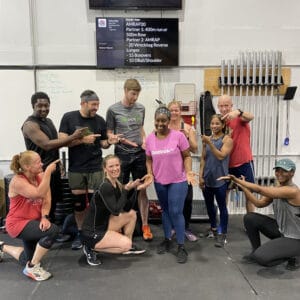
This emphasis on community support is not just anecdotal; studies have shown that individuals who participate in group fitness classes, like those offered at CrossFit gyms, experience greater motivation, improved adherence to exercise routines, and better results overall compared to those who work out alone. By embracing the support and camaraderie of your gym community, you are setting yourself up for success in your CrossFit journey.
Tracking Your Progress Without Focusing on PRs
How to Measure Improvement Beyond Personal Records
To track your progress in CrossFit without solely focusing on personal records (PRs), it’s important to look at other indicators of improvement. One effective way is to keep a workout journal where you can note down the weights you used, the number of reps completed, and how you felt during the workout. By comparing your performance over time, you can see if you are getting stronger, faster, or more efficient in your movements.
To further enhance your progress tracking, consider utilizing performance metrics such as body measurements, endurance levels, and mobility improvements. These metrics can provide valuable insights into your overall fitness development and can help you set realistic goals for your CrossFit journey.
Setting Achievable Goals and Celebrating Milestones
Goals are crucial in any fitness journey, including CrossFit. Setting achievable goals allows you to have a clear direction and purpose in your training. Start by establishing both short-term and long-term goals that are specific, measurable, attainable, relevant, and time-bound (SMART). Celebrate milestones along the way, such as hitting a new personal best, mastering a challenging movement, or completing a workout without scaling.
A study conducted by the Journal of Strength and Conditioning Research found that individuals who set specific goals were more likely to show improvements in physical performance compared to those who did not have clear objectives. By setting achievable goals and celebrating milestones, you can stay motivated, track your progress effectively, and continue to push yourself towards becoming the best version of yourself in CrossFit.
Avoiding Common Pitfalls for CrossFit Beginners
How to Listen to Your Body and Prevent Injury
Pitfalls can arise when beginners ignore the signals their bodies are sending them. It is important to pay attention to any discomfort or pain during workouts, as pushing through it can lead to serious injury. Instead, learn to differentiate between muscle soreness and actual pain, and don’t be afraid to modify or scale back exercises to accommodate your body’s needs.
Listening to your body also means being mindful of proper form and technique. Many injuries in CrossFit occur due to poor form or overexertion. Take the time to learn the correct movements from a qualified coach, and always prioritize technique over speed or weight. By listening to your body and practicing good form, you can prevent injuries and progress safely in your CrossFit journey.
When to Push Yourself and When to Back Off
Yourself, it is vital for beginners to understand when to push themselves and when to back off. CrossFit is a challenging workout program that can push your limits, but pushing too hard too soon can lead to burnout or injury. Use the guidance of your coach to gradually increase intensity and weight, and always listen to your body’s cues.
Beginners should aim to find a balance between pushing themselves to improve and knowing when to pull back to prevent overtraining. Rest and recovery are equally important as pushing yourself in CrossFit, as they allow your body to adapt and grow stronger. By finding this balance, beginners can progress steadily and avoid common pitfalls that may hinder their fitness journey.
Supplementing Your CrossFit Journey
All CrossFit beginners must understand the importance of supplementing their training with additional work to enhance their overall performance. While the core CrossFit program focuses on strength and conditioning, incorporating specific elements can help improve mobility, flexibility, and overall physical preparedness.
Incorporating Mobility and Flexibility Work
All CrossFit athletes should prioritize mobility and flexibility work to prevent injuries and improve movement efficiency. Incorporating dynamic stretching, foam rolling, and mobility exercises into your routine can help increase range of motion, enhance muscle flexibility, and improve overall performance. By dedicating time to mobility work, athletes can address movement restrictions, imbalances, and weaknesses that may hinder progress in CrossFit workouts.
Understanding CrossFit’s Take on General Physical Preparedness (GPP)
One of CrossFit’s fundamental principles is the focus on General Physical Preparedness (GPP). This concept emphasizes the development of a well-rounded fitness foundation that encompasses strength, conditioning, endurance, agility, and more. By training across multiple domains of fitness, athletes can build a versatile skill set that prepares them for a wide range of physical challenges. The CrossFit methodology aims to enhance overall physical capacity and create well-rounded athletes capable of excelling in any fitness endeavor.
CrossFit beginners must understand and embrace the concept of General Physical Preparedness (GPP) as a foundational element of their training. By following the CrossFit approach to fitness, athletes can achieve sustainable, long-term progress and develop the necessary skills to thrive in diverse physical activities. With over 20 years of proven results and a dedicated community of athletes, CrossFit continues to demonstrate the effectiveness of its methodology in building resilient, capable individuals.
Conclusion
Presently, it is imperative for beginners in CrossFit to understand and prioritize proper technique over faster times or heavier weights. Mastering the basics of movements and exercises is crucial for long-term success and injury prevention in this strength and conditioning program. It is far more beneficial to focus on developing a solid foundation of movement patterns before attempting to lift heavier weights or complete workouts at a faster pace.
CrossFit is a journey that requires patience, dedication, and a willingness to learn and improve continually. By embracing the principles of proper technique, consistency, and progression, beginners can set themselves up for success in their CrossFit journey. Note, it’s not about chasing personal records; it’s about mastering the fundamentals and building a strong foundation for a lifetime of physical health and well-being.
FAQ
Q: What is the most important focus for beginners in CrossFit?
A: For beginners in CrossFit, it is crucial to prioritize mastering the basics before focusing on personal records (PRs). Building a strong foundation of proper movement and technique will set you up for long-term success in the program.
Q: How should beginners approach learning new movements in CrossFit?
A: Beginners should approach learning new movements in CrossFit with humility and a willingness to practice proper form. Avoiding the temptation to rush into heavier weights or faster times is key to preventing injury and developing mastery over the exercises.
Q: Are special diets and supplements necessary for success in CrossFit?
A: Special diets and supplements are not necessary for success in CrossFit. The focus should be on fueling your body with nutritious foods and staying hydrated to support your training. Recall, results in CrossFit come from consistent effort and dedication to the program, not quick fixes or shortcuts.

